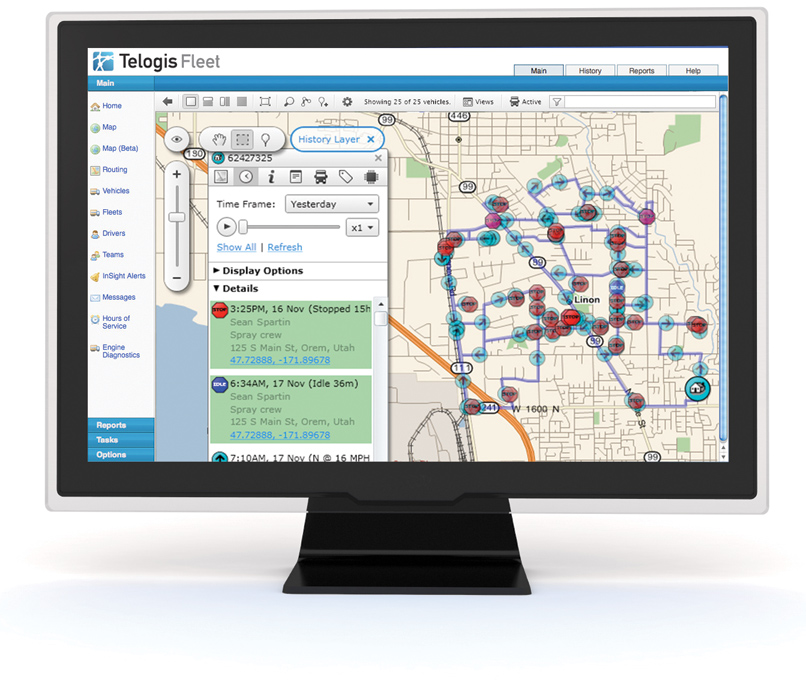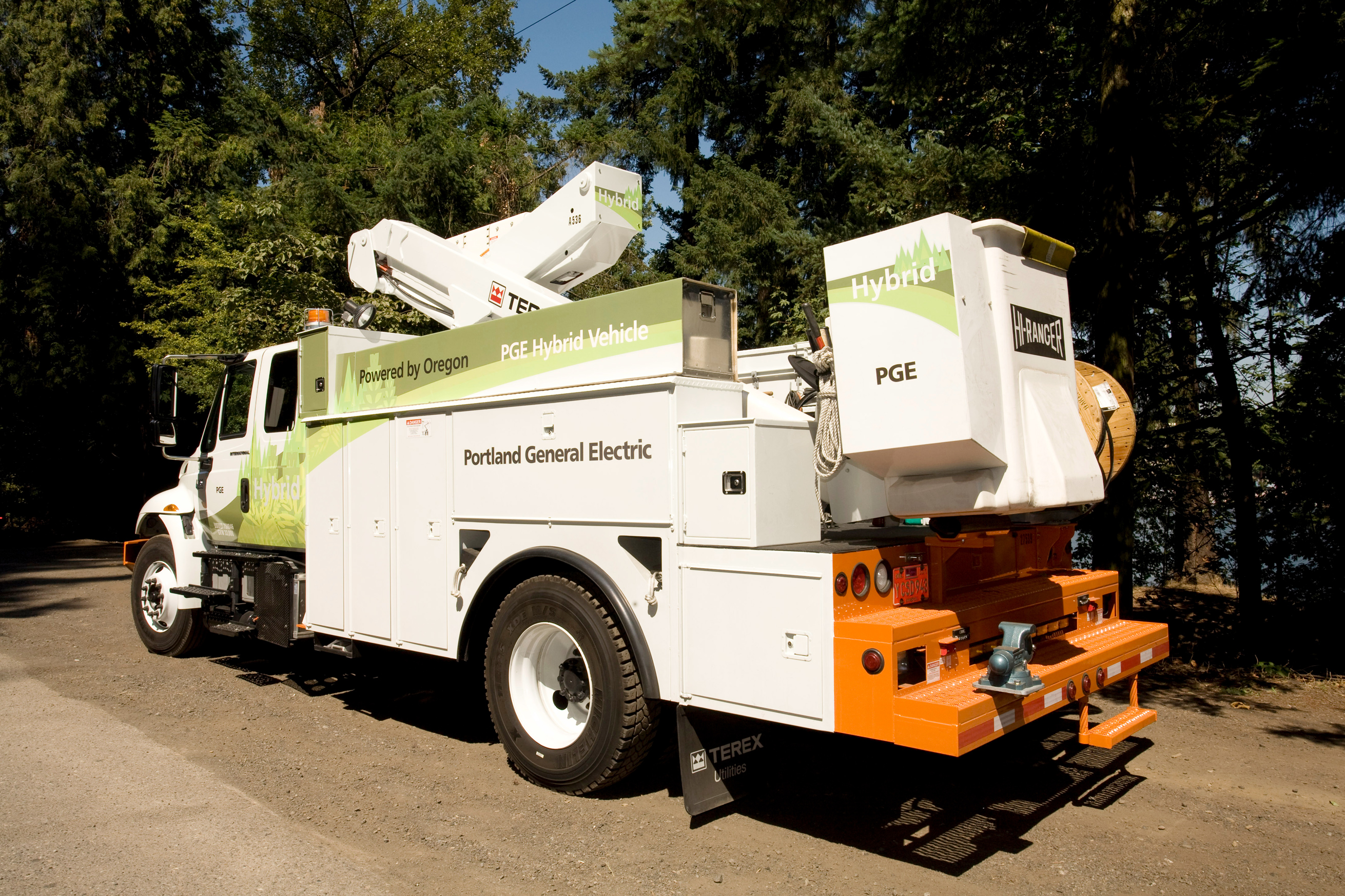Customer service and satisfaction have always been of paramount importance for utilities – particularly when those customers are waiting on a technician to connect or restore their service. In the past, utilities invested in larger fleets, more staff and contract crews in order to speed customer response times. Facing operational cutbacks and lower budgets due to the recent economic downturn, many utilities have had to take a fresh look at how they can maintain high levels of service without hiring more people or buying more trucks.

George Jones, Manager
Transportation &
Distribution Assets
Portland General Electric
Portland, OR USA
Over the past few years, there have been a number of technical advancements that can help utilities better manage mobile workers, streamline operations and improve efficiency. The increased prevalence of mobile broadband and smart phones, and the near ubiquity of laptops for field workers, has made communicating with remote teams much simpler. What was missing from these systems was the ability for organizations to track and communicate with assets like utility trucks and boom trucks. Although having the right technician in the field for a particular job is critical, deploying them without the correct equipment can slow down service resolution.
At Portland General Electric, we are looking to location-based technology as a key tool to help optimize our fleet’s efficiency, improve customer service and keep our drivers and equipment safe. After evaluating several solutions, we are currently in phase one of our implementation of Telogis Fleet, a Software-as-a-Service (SaaS)-based fleet management system.
Making the best use of resources
One of the most compelling reasons to deploy GPS-based fleet tracking is to improve scheduling and dispatching. With each vehicle containing a GPS receiver, fleet operators have real-time visibility into vehicle and driver locations. Fleet dispatchers no longer have to make assumptions about the best vehicle to dispatch to a location by “guesstimating” where they would be based on their daily schedules. Every truck is visible on a single screen, at any given time.

GPS-based fleet management means that every truck is visible on a single screen at any given time.
PGE has a wide variety of trucks, with a range of sizes and uses, and the fleet management system can show us what type of vehicle is in each location, and what equipment it has on board. If a job simply requires a single-man crew in a repair truck, we would no longer waste resources by sending out a boom truck with a crew of two or more. This saves money by cutting down the amount of fuel used by a heavier vehicle, and allows the company to deploy more valuable resources only where needed.
Crews can also receive schedule updates in the field, as well as turn-by-turn directions to each location. This eliminates the possibility of costly detours and allows managers to route crews away from traffic bottlenecks.
Improved routing saves a considerable amount of fuel and helps us to restore service to our customers more quickly, both of which have a direct impact on our bottom line.
Utilities are a 24/7/365 operation, and PGE is a fully integrated electric utility that provides safe and reliable power to approximately 816,000 residential, commercial and industrial customers in Oregon. It was imperative that the solution could be viewed at any time from various locations. With this in mind, we deployed a Web-based solution that wouldn’t require us to host or maintain servers in each location, saving valuable IT resources in the process.
Maximizing crew uptime
Fleet management provides the control room and fleet managers with instant feedback on the activity of each crew. It has the capability to monitor whether the crew is leaving the service center on time in the morning, taking excessive breaks between jobs, or arriving at job sites on time, all of which can have a major impact on a crew’s productivity.
The system also enables our fleet managers to track – through a “breadcrumb trail” – precise details of where a crew has been on any given day. It’s even possible to set up exception alerts in case a crew deviates from an assigned route or leaves a predetermined area. This information can be transmitted in real time as alerts to home base, as well as aggregated to provide trend reports of crews’ performance over time.
Although a crew’s work activities are tracked in great detail, it was important to ensure that none of the drivers feels watched by “Big Brother.” Drivers were educated about why the solution was implemented, highlighting the improvement in service resolution times and customer satisfaction. Generally, the system has been well received throughout the mobile workforce. From a corporate point of view, the results have been very promising and workforce efficiency has noticeably improved.
Long-term Business Intelligence
Like many other organizations, utilities have a need for actionable intelligence to make long-term strategic decisions about vehicle purchases, maintenance and eventual retirement, as well as optimal staffing. This type of critical business decision was previously made on best-guess assumptions and analysis that, although usually accurate, was not always 100 percent reliable. Now usage data can be extracted from the fleet management system and imported into dashboards, and decisions can be made with a significantly higher confidence level. This generates real long-term efficiency gains for the company while reducing unnecessary expenditures.
Real-time feedback is incredibly helpful in the tactical planning of crew scheduling and dispatch, and for making on-the-fly deployment decisions. Every day it continues to bring the company ROI by cutting fuel spend, reducing the time taken to get to job sites, and speeding customers’ service restoration time.
PGE is now able to make more informed decisions about fleet maintenance as well. In the past, the focus has been on historical data, such as how many miles a vehicle has been driven since its last overhaul. While this was generally effective in keeping trucks on the road, it also resulted in a considerable amount of unnecessary maintenance. By contrast, our new system proactively monitors the health of the vehicles and delivers just-in-time maintenance management.
We are learning that sensors can constantly perform a range of diagnostic checks on everything from the battery’s voltage to the health of the main or auxiliary engines, providing real-time data on the health of many critical vehicle components. This monitoring will enable us to perform more timely scheduled maintenance tasks and avoids unnecessarily replacing parts that are still within their operational lifespan.
The maintenance staff will have the capability to also receive alerts about components that may be about to fail prematurely and can proactively replace them before they cause a breakdown in the field. As a result, maintenance costs and vehicle downtime can both be reduced.
Ensuring Crew Safety
Although customer service and cost containment are perennial concerns for fleet managers, safety of our crews in the field and our customers are always our top priority. This is another area where technology can deliver a significant benefit. Through a combination of a GPS module and an accelerometer, the control room can get real-time updates on the location, speed and driving behavior of any driver. Therefore, if a truck is accelerating or breaking too heavily, swerving aggressively or exceeding a posted speed limit, the control room or fleet manager is alerted.

This not only provides a safer environment for the crews and other drivers on the road, but it also has long-term cost benefits. Vehicles use less fuel, have less wear-and-tear and are involved in fewer accidents. Furthermore, the system provides a 100 percent reliable record of the manner in which each vehicle is being driven at all times much like the “black box” in a commercial airplane. Therefore, when another driver makes a claim that a PGE truck was being driven in a dangerous manner or caused an accident, the claim could be investigated with complete confidence. This also eliminates the likelihood of the company being the target of frivolous lawsuits.
If a vehicle is involved in an accident, being able to pinpoint its whereabouts is vital, especially if the radio in the cab is not within reach or has been damaged. So far, the new system has had a significant impact on our daily operations, improving efficiency and speeding up response and resolution times. PGE has already started to see possible long-term benefits of the intelligence that the solution provides and expects that over the years, it will continue to deliver strong ROI and enable the best, most cost effective service to our customers.
About the Author
George Jones is the manager of Transportation & Utility Assets at Portland General Electric and has been with the company for 18 years. George began his career as a plant design engineer with Los Angeles Department of Water and Power and holds a degree in Electrical Engineering.







